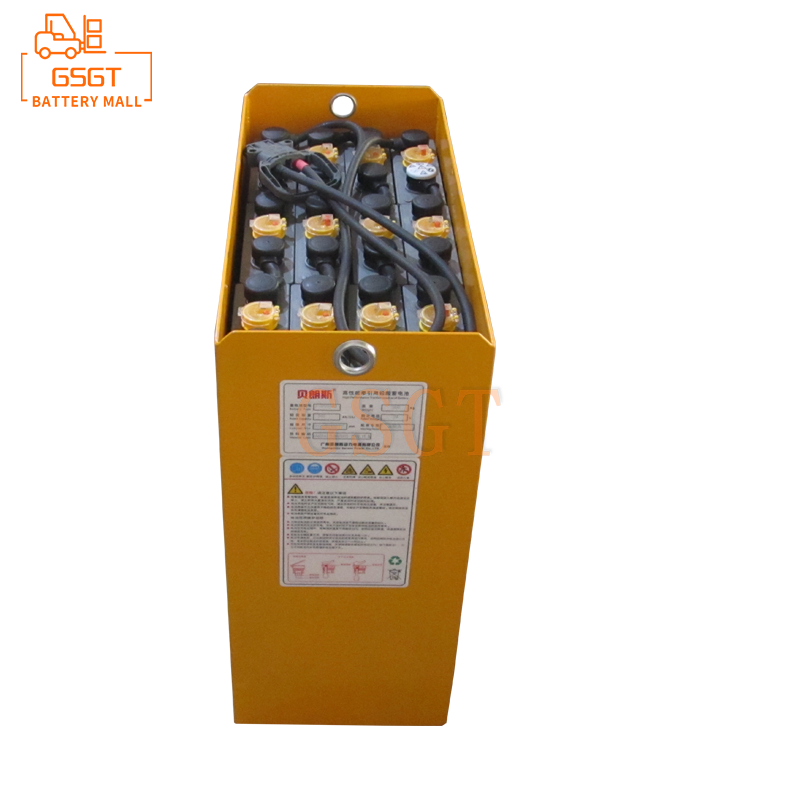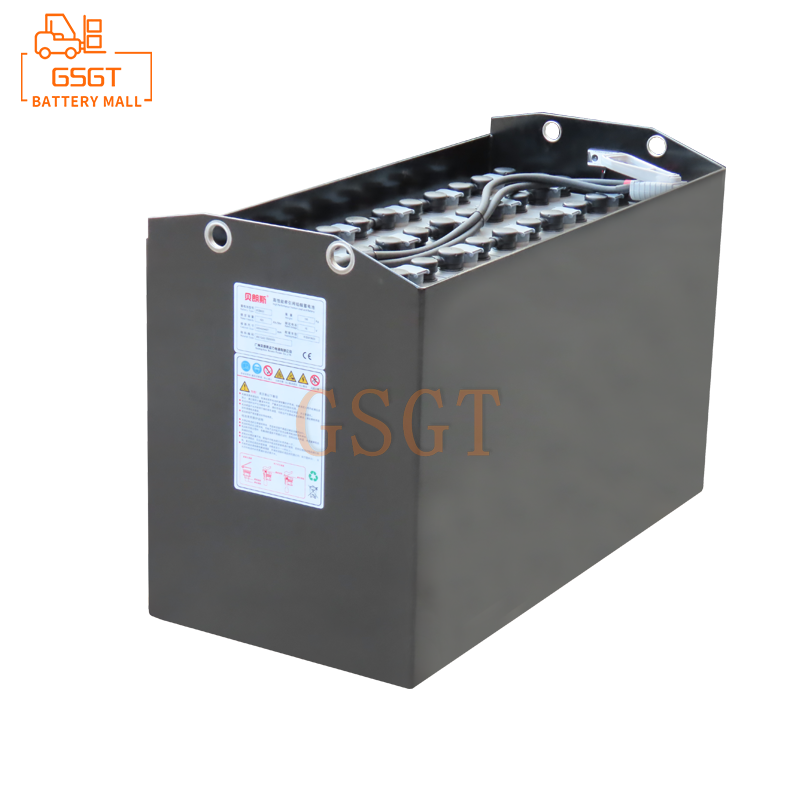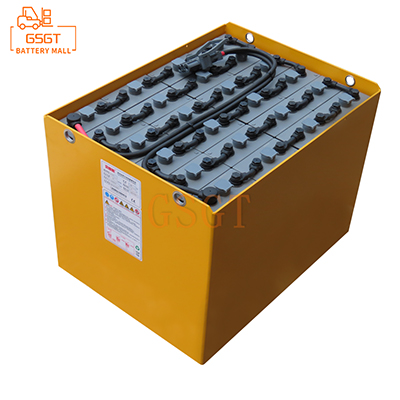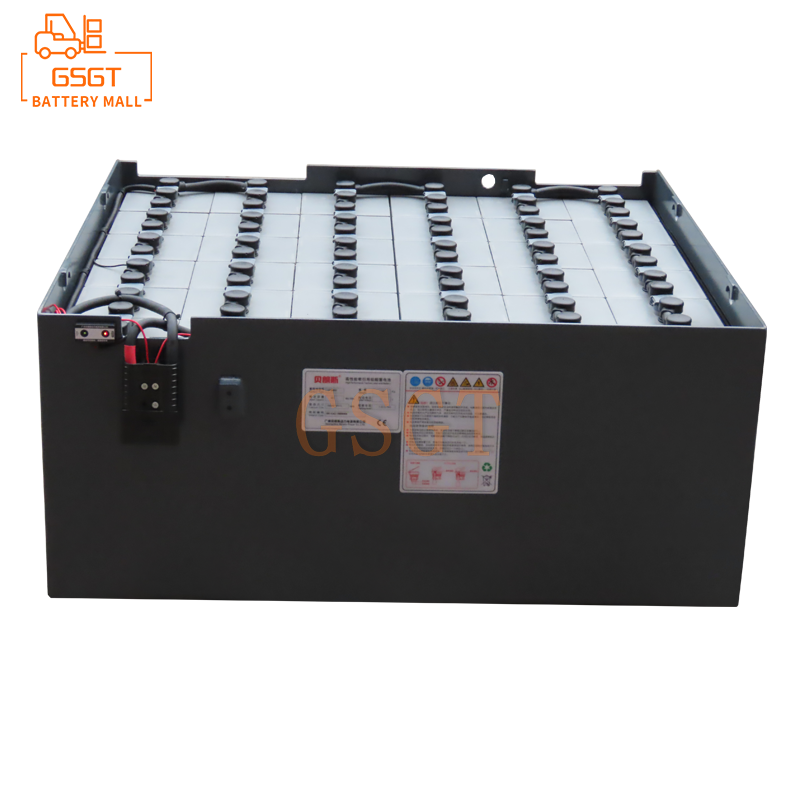Time:2025-04-30 11:13:01
Browse:607
1. Introduction
In the daily operation of forklifts, lead-acid batteries, as a key power source, their performance directly affects the working efficiency and operational stability of forklifts. As the usage time increases, the performance of lead-acid batteries will gradually decline. Timely determination of whether they need to be replaced is crucial for ensuring the normal operation of forklifts, reducing operating costs, and avoiding potential safety hazards. This article will elaborate in detail from multiple dimensions on the methods and key points for determining whether the lead-acid battery of a forklift needs to be replaced.
2.Observe the appearance and condition of the battery
1. **Shell Inspection**
Carefully observing the casing of a lead-acid battery is an important step in initially judging its condition. Check whether there are obvious deformations, bulges or cracks on the shell. If the shell swells, it is very likely that the internal chemical reaction is abnormal, generating excessive gas that cannot be discharged, resulting in an increase in internal pressure. For instance, when overcharged, water is largely decomposed into hydrogen and oxygen. When the exhaust hole is blocked, the gas accumulates inside the battery, causing the casing to swell. However, the rupture of the casing may lead to the leakage of the electrolyte, which not only pollutes the working environment but also reduces the chemical substances inside the battery, affecting its performance. Once severe deformation, swelling or cracking of the casing is found, the battery should be stopped from use immediately and replacement should be considered.
2. ** Pole condition **
The terminals of a battery are the key parts for connecting to the external circuit. Observe whether there is severe corrosion or loosening of the terminal post. Terminal post corrosion is usually manifested as a layer of white or green powder-like substance covering the surface, which is caused by the chemical reaction between the electrolyte leakage and the metal of the terminal post. Corrosion will increase the contact resistance between the terminal post and the connecting wire, resulting in poor current transmission. As a result, the forklift may experience insufficient power during start-up and operation. Loose terminals can cause unstable connections, easily generate electric sparks, and even lead to circuit interruptions, affecting the normal operation of forklifts and posing safety hazards at the same time. If the terminals are severely corroded and difficult to repair, or if the terminals are loose and cannot be restored to normal by tightening, then the battery may need to be replaced.
3. Test the capacity and performance of the battery
1. **Use professional instruments to measure capacity**
The actual capacity of lead-acid batteries can be accurately measured through professional battery capacity testers. Connect the tester to the battery and conduct the discharge test in accordance with the operation instructions of the instrument. During the testing process, the instrument will record the voltage, current and other data of the battery at different discharge stages, and calculate the actual capacity of the battery. Generally speaking, the capacity of a new lead-acid battery should be close to its nominal capacity. If, after testing, the actual capacity of the battery drops below 60% to 70% of its nominal capacity, it indicates that the battery's performance has seriously declined and can no longer meet the normal operation requirements of the forklift. At this point, it is necessary to consider replacing the battery.
2. **Check the battery voltage**
Measuring the voltage of a battery with a multimeter is also a commonly used detection method. Measure the terminal voltage of the battery when it is fully charged. Under normal circumstances, the voltage of a single 2V lead-acid battery when fully charged should be between 2.15 and 2.25V. If the measured voltage is significantly lower than this range, it indicates that there might be a problem with the battery. In addition, during the battery discharge process, continuously monitor the voltage changes. If the voltage drops too rapidly, for instance, rapidly from the normal operating voltage to a lower level within a short period of time and cannot be maintained stably, this indicates that the battery's storage capacity and discharge performance have deteriorated, and it may be necessary to replace it.
3. **Conduct charge and discharge tests**
A complete charge and discharge test can provide a more comprehensive understanding of the performance of the battery. First, completely discharge the battery and record the discharge time and the voltage changes during the discharge process. Then charge it and observe the charging time and the upward trend of the voltage during the charging process. Under normal circumstances, the charging time should be within a reasonable range and the voltage should rise steadily. If the charging time is too long, exceeding 1.5 times the normal charging time, or if the voltage rises abnormally during the charging process, such as reaching the full charging voltage too early or experiencing significant voltage fluctuations, it indicates that there is a problem with the battery.
4. Pay attention to the performance of the forklift during operation
1. **Decline in dynamic performance**
When a forklift experiences a significant lack of power during operation, it may be related to the lead-acid battery. For instance, when forklifts are handling goods, their ability to climb slopes weakens. Slopes that could have been easily climbed before now become strenuous, or even impossible to climb. Or when driving on flat ground, the acceleration is slow and the speed cannot reach the normal level. This is because the battery capacity has declined and is unable to provide sufficient electrical energy to drive the forklift motor to operate normally. If the problem of declining power performance persists after ruling out other factors such as mechanical faults of the forklift, it is very likely that the battery needs to be replaced.
2. **Shortened working hours**
Under normal circumstances, a fully charged lead-acid battery can ensure that the forklift operates continuously for a certain period of time. If it is found that the working time of the forklift has significantly shortened and this situation occurs frequently, it indicates that the battery's power storage capacity has decreased and it cannot store sufficient electricity to meet the working requirements of the forklift. This might be caused by reasons such as aging of the internal plates of the battery and reduction of active substances. At this point, it is necessary to consider replacing the battery.
3. **Abnormal sounds and vibrations**
During the operation of the forklift, pay attention to listening for any abnormal sounds from the battery, such as the "gurgling" bubbling sound or other unusual noises. Under normal circumstances, there will be slight bubbles produced during the charging and discharging process of the battery, but there should be no obvious abnormal sounds. If abnormal sounds occur, it may be due to a short circuit or other faults inside the battery. At the same time, observe whether the forklift experiences abnormal vibrations during operation, as this may also be related to the performance issues of the battery. For instance, when the internal plates of a battery become loose, during the operation of a forklift, they may vibrate and cause collisions, resulting in abnormal vibrations. If these abnormal situations occur, the battery should be inspected and evaluated in a timely manner, and replaced if necessary.
5. Refer to the service life of the battery
Lead-acid batteries all have a certain service life. Generally speaking, the normal service life of forklift lead-acid batteries is about 3 to 5 years, but this can also be affected by factors such as usage frequency, usage environment, and maintenance. If a battery has been in use for nearly or more than this period of time, even if it still seems to be working normally at present, its performance may have begun to gradually decline, and there is a potential risk of failure. In this case, even if no obvious serious problems are found through the above-mentioned detection methods, it is still advisable to consider replacing the battery in advance to avoid sudden malfunctions during operation, which could affect the normal operation and work progress of the forklift.
6. Conclusion
Determining whether the lead-acid battery of a forklift needs to be replaced requires a comprehensive consideration of multiple aspects. By observing the appearance and condition of the battery, some obvious physical damages and abnormal situations can be found. Using professional instruments to test capacity and performance can accurately understand the actual working ability of the battery. Pay attention to the performance of the forklift during operation and judge whether the battery meets the working requirements from aspects such as power, working time and abnormal sounds. At the same time, referring to the service life of the battery, conduct an advance assessment of batteries that are approaching or exceeding their service life. Only by comprehensively applying these methods can it be determined in a timely and accurate manner whether the lead-acid battery of the forklift needs to be replaced, ensuring the safe and efficient operation of the forklift, reducing operating costs and the risks brought by equipment failures. In actual operation, it is recommended to regularly inspect and maintain the lead-acid batteries of forklifts, establish detailed maintenance records, so as to better grasp the status and performance changes of the batteries and take corresponding measures in a timely manner.

$1105

$2450

$3405

$4045

MESSAGE
Professional And Efficient
Security
Affordable Price
Professional Services